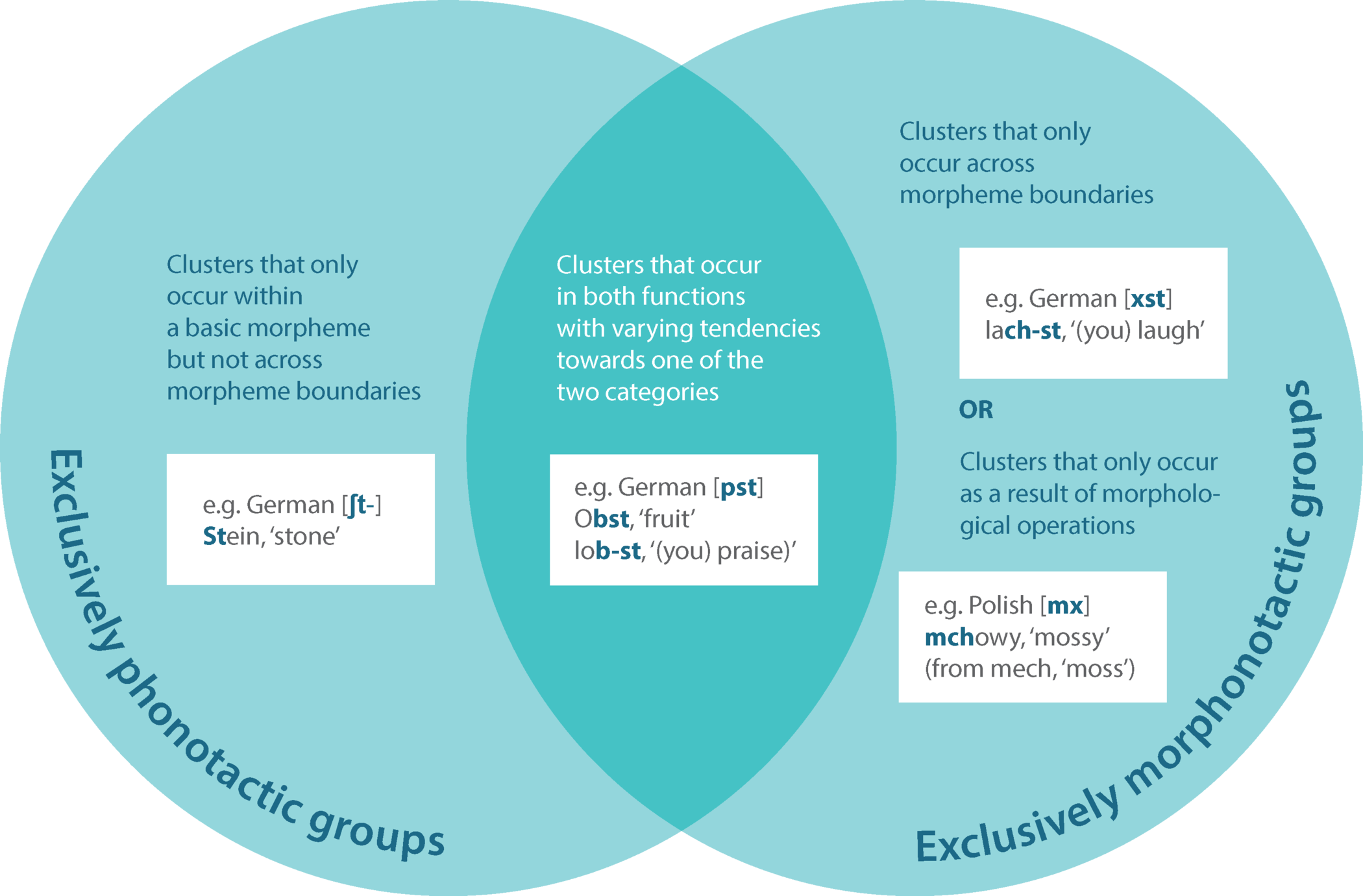Be-SyMPHONic
Human Behaviour and Machine Simulation in the Processing of (Mor)Phonotactics
Be-SyMPHONic is a research project dedicated to the study of the psycholinguistic and computational representation of phonotactic and morphonotactic consonant clusters in French and German.
The study focuses on the interaction of phonotactics and morphology. The field of phonotactics is concerned with exploring the patterns that determine in which order phonemes (the smallest units of speech sounds) can appear within larger structures such as morphemes, syllables and words. When such phoneme sequences span a morpheme boundary and are brought about by morphological operations, these sequences are defined as morphonotactic.
In this context, consonant clusters can be sorted into the following three categories:
With regard to this phenomenon, Wolfgang Ulrich Dressler and his research associates have developed a model of morphonotactics and the ‘Strong Morphonotactic Hypothesis’ which claims that phonotactics and morphology support each other in the processing of exclusively or predominantly morphonotactic sequences. To test this hypothesis, the two research teams in Vienna and Toulouse work together and complement each other in exploring the phenomenon using a number of methodological approaches. The French team leads in modeling, computational simulation and psycholinguistic experimentation, the Austrian team in first language acquisition, phonetic analysis and diachronic language change and corpuslinguistic differentiation of genres.
This bilateral research project was funded by Agence Nationale de la Recherche (ANR) [ANR-13-ISH2-0002] in cooperation with the Austrian Science Fund (FWF) [I-1394-G23].



Contact
Project duration
13 January 2014 – 12 January 2019
Twitter Hashtag
#BeSyMPHONic

